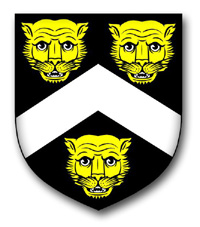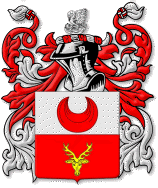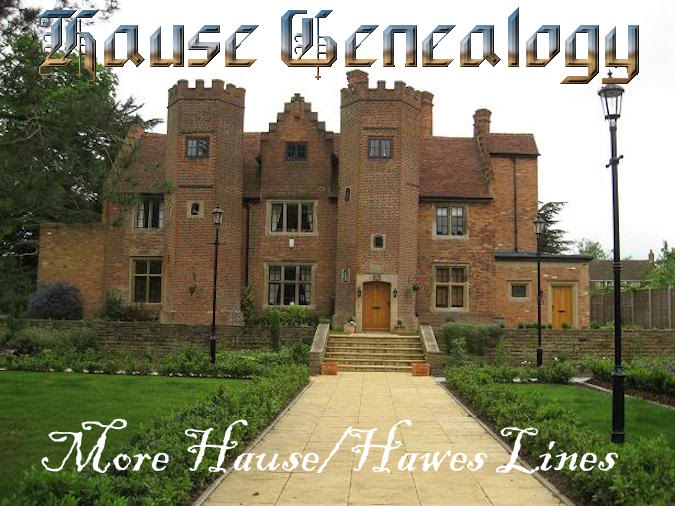 |
|
Surnames became necessary when governments introduced personal taxation, known in England as Poll Tax. The English surname Hause was first found in Oxfordshire, where the family held a family seat from ancient times. This surname has (at least) three possible origins. The first is locational, from residence at a 'hause', which maybe a neck of land, but was generally a place for gathering animals. The town of Hawes in Yorkshire, has the same meaning, but the surname pre-dates the town. It may also be derived from someone who resided "at the haw", which refers to a garth, yard, or enclosure. Before the common use of surnames, someone who had an enclosure when his neighbors had none—or who had a larger enclosure than they—might be called, "John at the Haw," or "John of the Haw." Over time, it would have become a true surname, and plural, possibly due to the family being multigenerational, or owning several "haws" or enclosures.
The second possibility is as a patronymic from the medieval given name "Haw". This is itself a diminutive or pet-form of 'Hawkin' or 'Havekin', themselves from the Olde English pre 7th Century 'Hafoc'.
The last Anglo-Saxon source of Hause is from a female personal name introduced by the Normans after 1066.¹ This is the Old French name Haueis, from the Old German personal name Hadewidis, which literally means battlewide, composed of the elements Hadu, meaning "strife," and widi, meaning "broad."
As a personal name it was first recorded as 'Hawis', in the Curia Regis Rolls of Suffolk, for the year 1208. But the first recorded use of the surname is shown to be that of Alan del Hawse in the Hundred Rolls of Oxfordshire, during the reign of King Edward 1, dated 1272. He was followed by Robert Hawyse of Oxford in 1279, John de la Hawe of Huntingdon in the same year, and Maurice aate Hawe, rector of Newton, County Norfolk in 1362.
In those times, even the most literate people recorded their names according to sound rather than spelling. Spelling variations under which the name Hause has appeared also include Hawes, Hawe, Haugh, Haughes, Hause and others. But the invention of the printing press in 1450 did much to standardize English spelling. In the modern spelling the name is recorded as Hause, Hawes, Haws and Hawe. The family Coat of Arms is a blue shield with a gold chevron on which are three red cinquefoils, and an ermine canton. The Crest is a stag's head emerging from a crown.
'Reginoll Hawes' was one of the earliest American colonists, embarking from London, England, on January 15th 1634, bound for Virginia. In 1635, British passenger lists reveal that 29 year-old Richard Hawes or Haus (depending on which list you read) arrived in Massachusetts with him his wife, 26 year-old Ann, and their children: two year-old Anna, and 6 month-old Obediah Haus.² A 19-year-old Robert Haus also arrived in the same year.³
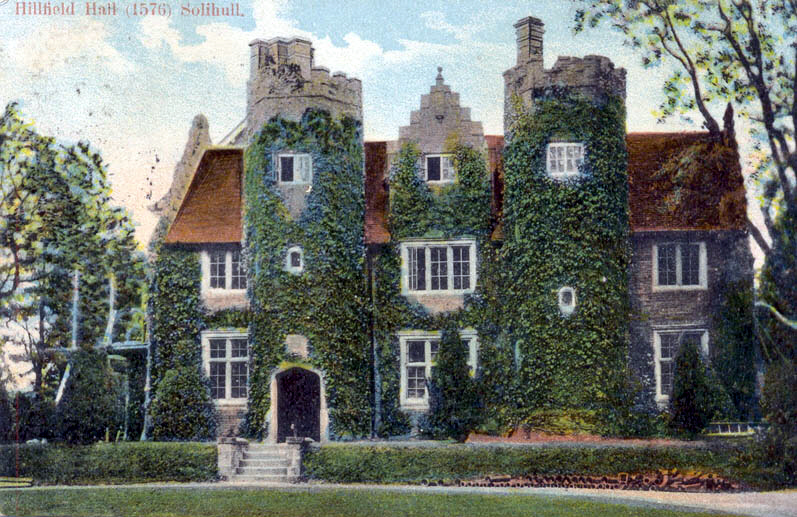 Hillfield Hall (shown here in 1904) was built for William and Ursula Hawes in 1576. It remained in the family until the 1660s. It became a nightclub (1964) and then a restaurant (1974), and now it has been converted into apartments on the once quiet lane joining Church Hill Road to Libbards Way. |
|
That pilgrim badass was EDMOND HAWES, JR. (sometimes spelled Howes, or Haws), who brought his wife and children to New England in 1635. Edmond was of royal blood, according to the book The Royal Descents of 600 Immigrants to the American Colonies of the United States, by Gary Boyd Roberts (Baltimore, 2004). On pages 422-3 it outlines his descent from King William I, "The Lion" of Scotland (d. 1214). Edmond was also descended from THOMAS HAWES of Shirley, a man "skilled in the law." The Family Coat of Arms comes from Hayes of Little Leigh: Sable, a chevron Argent between three leopards' faces Or (Harl 1424). Thomas Hawes bought an estate in Solihull in 1311. The Estate remained in the Hawes family for the next 250 years.
The Hawes mansion, Hillfield Hall, was built there in 1576. The Hawes's placed a tablet over the front door—WHV 1576 'Hic Hospites in Coelo Cives'—'Here we are guests, in heaven citizens'. The WHV initials are those of William and Ursula Hawes, descendants of Thomas, alongside the date that the house was completed. The south front of the Hall was destroyed by fire in 1867, but was rebuilt and still stands today... as an apartment complex.
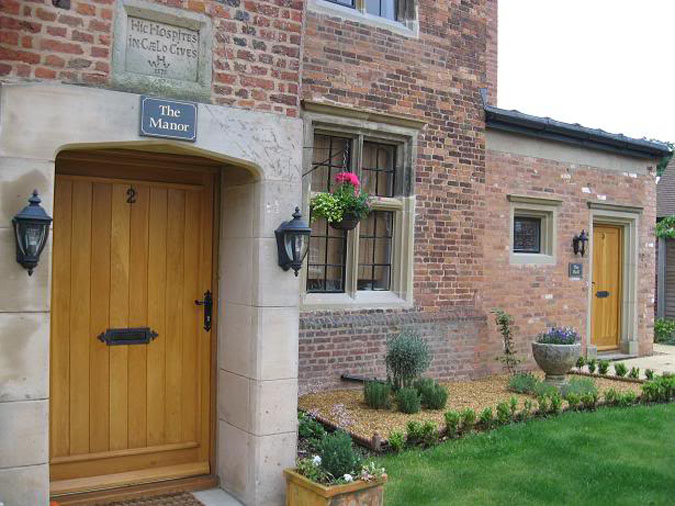 Hillfield Hall today. The front facade features a tablet over the front door—WHV 1576 'Hic Hospites in Coelo Cives'—'Here we are guests, in heaven citizens'. The WHV initials are those of William and Ursula Hawes. |
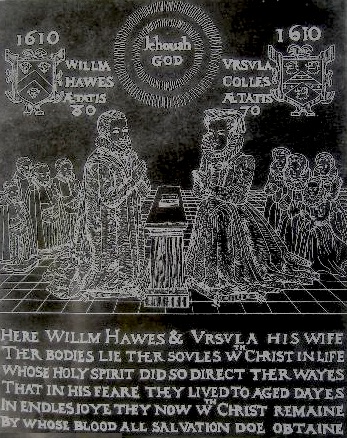 |
In 1635, his third son EDMOND HAWES, JR., (bapt. at St. Alphege Church on 15 Oct 1612), with no lordship to maintain, sailed for America aboard the ship James, listed as "Edmund Hawes, cutler, late of London," and settled in the Plymouth colony of Duxbury, near Boston. He was the first Constable of Duxbury, starting in 1642/3, and serving well into the 1650's. Then on June 5, 1677, his son, JOHN HAWES, was elected constable of Yarmouth. John became a Captain in the military, then died on 11 Nov 1701, "having his Leg Cut of Dyed with it."
Could we be related to Edmond Hawes, as Carlisle hinted? Our family surname was often spelled as "Hawes" or "Haws" in legal documents of the time. (In fact, many lines of our family still spell their name that way today!) But is there a link from John Hawes of Yarmouth, Massachusetts (1635-1701), to John Hause of Haverstraw, New York (b. 1690)?
The area in Connecticut where the Edmond Hawes descendants lived was actually ceded to New York on July 20, 1764, fixing the Connecticut River as the boundary of the two colonies. But a book called The Ancestors And Descendants Of Edmond Hawes of Yarmouth, Massachusetts, an Emigrant to America In 1685, His Ancestors, Including the Allied Families Of Beome, Colles, Greswold, Porter Rody, Shirley And Whitfield; And Some Of His Descendants, by James William Hawes, A. M., claims that the only descendant of Edmond in New York in the time of our ancestors was a man named ISAAC HAWES, (Apr 1708 - Dec, 1785), whose son, Prince, was a Loyalist who fled New York and died in Hempstead, Long Island, in 1782. Prince's will says he is from Redding, Connecticut, and mentions brothers Isaac and Samuel, and sisters Eunice, Zurviah, and Susannah, "all now or late of Kent, Conn." But there is no mention of a John or William from our line, living in Orange County. Isaac Hawes died 200 miles away from them, in Danby, Tompkins Co., New York (p. 176), but no connection to our family has been found.⁴
A SECOND GERMAN HAUSE LINE IN THE U.S.:
Another line of American Hauses descends from MICHAEL HAUSE (sometimes spelled Haas or Haus), who came to America from Germany about fifty years after Johann. Although they came out of the same area of Europe, whether they were somehow related to our line is unknown. This Hause line is based mainly out of Colorado today, and is descended from an immigrant ancestor named Michael Hause.
In 1753 or so, this Michael Hause married a woman named Anna Marie. Their son Wilhelm (b 1779) then married Catherine Hull. The son of that union was Jesse Hause (b 1806), who married Ruth Ann Graham Weiss Hause. She had been married to some Weise guy in Pennsylvania, making this all even more confusing.
|
William and Mary had four sons and a daughter, and they moved north of Denver, Colorado, to the Fort Lupton area. William bought large tracts of land, and so he left each his children large homesteads to farm there.
A genealogist in this line writes to us: "My uncle found there were only 2 or 3 basic Hause families, and he was always trying to tie or figure out how we connected to one in New York. They had the same first names Williams and Johns (in fact this family's William and our family's William lived at the same time, and both gave us a "Jesse Hause" in the same year!), and this is common in families.
"I read something that said all the Hauses are related and they took the name because their name was spelled phonetically when they arrived, so they have got hawes and haas and even hayes. I think there is a connection also. Someone in Va wrote me that his family descended from Michael's younger brother, a Christian Johann or Johann Cristian. I hope he gets back to me. It will take a lot of work to fill in the blanks because even my grandfather's uncles went by Haus some Hawes some Hause and some Haas. So it makes it really hard."
|
"I have one (web) page I did a couple years ago just on the Allen genealogy, as it is on both sides of my dad's parents' families—they turned out to be 4th cousins!
"It's all connected to the ETHAN ALLEN family: Cousins and brothers I descend from—and I found another line to Princess Diana. It's the Strong line, which also moves into the Allen line at some point.
"I have a lot on the Allen line, so I looked your connection up—lol—maybe we are double cousins. When you go back far enough, that happens. My Uncle Malcom's wife ended up being related to my dad's mother's family, so that's funny. Lots of fun things in genealogy."
So, fittingly, another "Allen" mystery dogs another yet Hause genealogist. And she's right—at some point, we're all related. So it's all valid, it's all relevant, and it's all a lot of fun to uncover.
As my aunt says, "Whatever... Let me know when you trace us all back to Eve."
NOTES ON THIS PAGE:
|
²—POPE, CHARLES HENRY. The Pioneers of Massachusetts, A Descriptive List, Drawn from Records of the Colonies, Towns and Churches, and other Contemporaneous Documents. Baltimore, MD: Genealogical Publishing Co., Inc., 1998. 550p. Page: 221
³—SAVAGE, JAMES. "Gleanings for New England History." Third series, volume eight. In Collections of the Massachusetts Historical Society. Boston: Charles C. Little and James Brown, 1843, pp. 243-348. Page: 262
⁴—To settle the matter of my Hause ancestry once and for all, in December of 2014 I took a Y37 DNA test with FamilyTreeDNA to check my paternal line. My Y-Chromosome DNA (Y-DNA) would trace my father, his father, his father's father, and so forth, as it is goes largely unchanged for centuries. This would prove, scientifically (and conclusively) that I was a direct descendant of Edmond Hawes. I would finally have hard, scientific evidence as to whether or not I am a true biological Hauß, or a Hawes, or a Haws, or a House, or... my head hurts. So Bob Hause and I submitted buccal swabs for a YDNA test to compare with three descendants of Esmond Hawes, and prepared (over the next eight loooooong weeks) to either confirm or deny what Carlisle only hinted at... And here are the results, with matching markers in white (I'll only show the first twelve STR markers):
| Ancestor | Haplogroup | DYS393 | DYS390 | DYS19 | DYS391 | DYS385 | DYS426 | DYS388 | DYS439 | DYS389i | DYS392 | DYS389ii |
| Jeff Hause, U.S. | I-M223 | 14 | 23 | 15 | 10 | 14-16 | 11 | 13 | 11 | 14 | 12 | 32 |
| Bob Hause, U.S. | I-M223 | 14 | 23 | 15 | 10 | 14-16 | 11 | 13 | 11 | 14 | 12 | 32 |
| Edmond Hawes, (Hawes) | I-M253 | 14 | 22 | 14 | 10 | 13-13 | 11 | 16 | 11 | 12 | 11 | 28 |
| Edmond Hawes, (Hawes) | I-M253 | 14 | 22 | 14 | 10 | 13-13 | 11 | 16 | 11 | 12 | 11 | 28 |
| Edmond Hawes, (Hawes) | I-M253 | 14 | 22 | 14 | 10 | 13-13 | 11 | 16 | 11 | 12 | 11 | 28 |
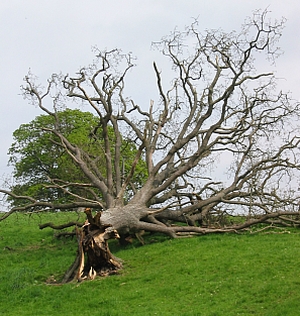 My family tree? "TIMBER!!!!!" |
The Haplogroup for three people claiming to be descendants of Edmond Hawes is I-M253, from the same Y-chromosome Haplogroup "I," which includes about a quarter of all northwest European men. Its largest subgroup, I1a, is common in Scandinavia and Germany and occurs in Britain at a frequency of about 15%. However, there is some controversy as to whether I-M223 should properly be considered a subgroup of Haplogroup I1, or a separate Haplogroup I2 (I2b1 lineage), which likely has its roots in northern France. Beyond that, we only match in four out of the first twelve markers, and I only match in 11 out of 37 STR markers, overall, with these Hawes progeny. This means we are NOT actually related! (We haven't had a common paternal ancestor for about 18,000 years, anyway.)
- James William Hawes, A. M. The Ancestors And Descendants Of Edmond Hawes of Yarmouth, Massachusetts, an Emigrant to America In 1685, His Ancestors, Including the Allied Families Of Beome, Colles, Greswold, Porter Rody, Shirley And Whitfield; And Some Of His Descendants. The Lyons Genealogical Company, New York; 1914.
- Roberts, Gary Boyd. The Royal Descents of 600 Immigrants to the American Colonies or the United States: Who Were Themselves Notable or Left Descendants Notable in American History. Baltimore: Genealogical Publishing Company. 2004; Addendum, Coda and Final Edition, copyright 2008. (ISBN 978-0-8063-1786-1)
- Marcharn, Frederick George. A Constitutional History of Modern England 1485 to the Present. London: Harper and Brothers, 1960.
- Thirsk, Joan. The Agrarian History of England and Wales. Cambridge: Cambridge University Press: 7 Volumes.
- Le Patourel, John. The Norman Empire. New York: Oxford University Press, 1976. Print. (ISBN 0-19-822525-3).
- Egle, William Henry. Pennsylvania Genealogies Scotch-Irish and German. Harrisburg: L.S. Hart, 1886.
- Elster, Robert J. International Who's Who. London: Europa/Routledge. Print.
- Burke, John Bernard Ed. The Roll of Battle Abbey. Baltimore: Genealogical Publishing.
- Cook, Chris. English Historical Facts 1603-1688. London: MacMillan, 1980.
- Bede, The Venerable. Historia Ecclesiatica Gentis Anglorum (The Ecclesiastical History Of the English People). Available through Internet Medieval Sourcebook the Fordham University Centre for Medieval Studies.
- Shirley, Evelyn Philip. Noble and Gentle Men of England Or Notes Touching The Arms and Descendants of the Ancient Knightley and Gentle Houses of England Arranged in their Respective Counties 3rd Edition. Westminster: John Bowyer Nichols and Sons, 1866.
- Bardsley, C.W. A Dictionary of English and Welsh Surnames: With Special American Instances. Wiltshire: Heraldry Today, 1901. Print. (ISBN 0-900455-44-6)
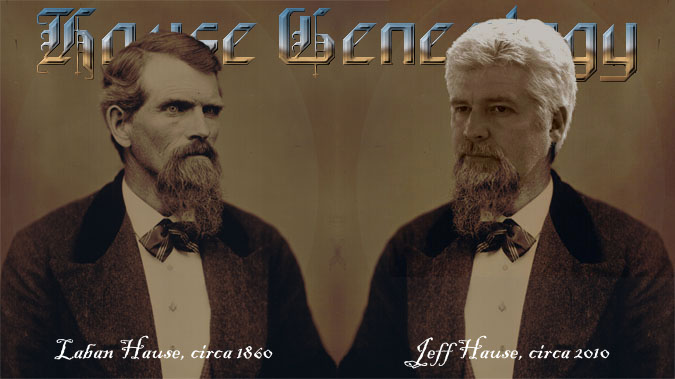 |
.gif)
